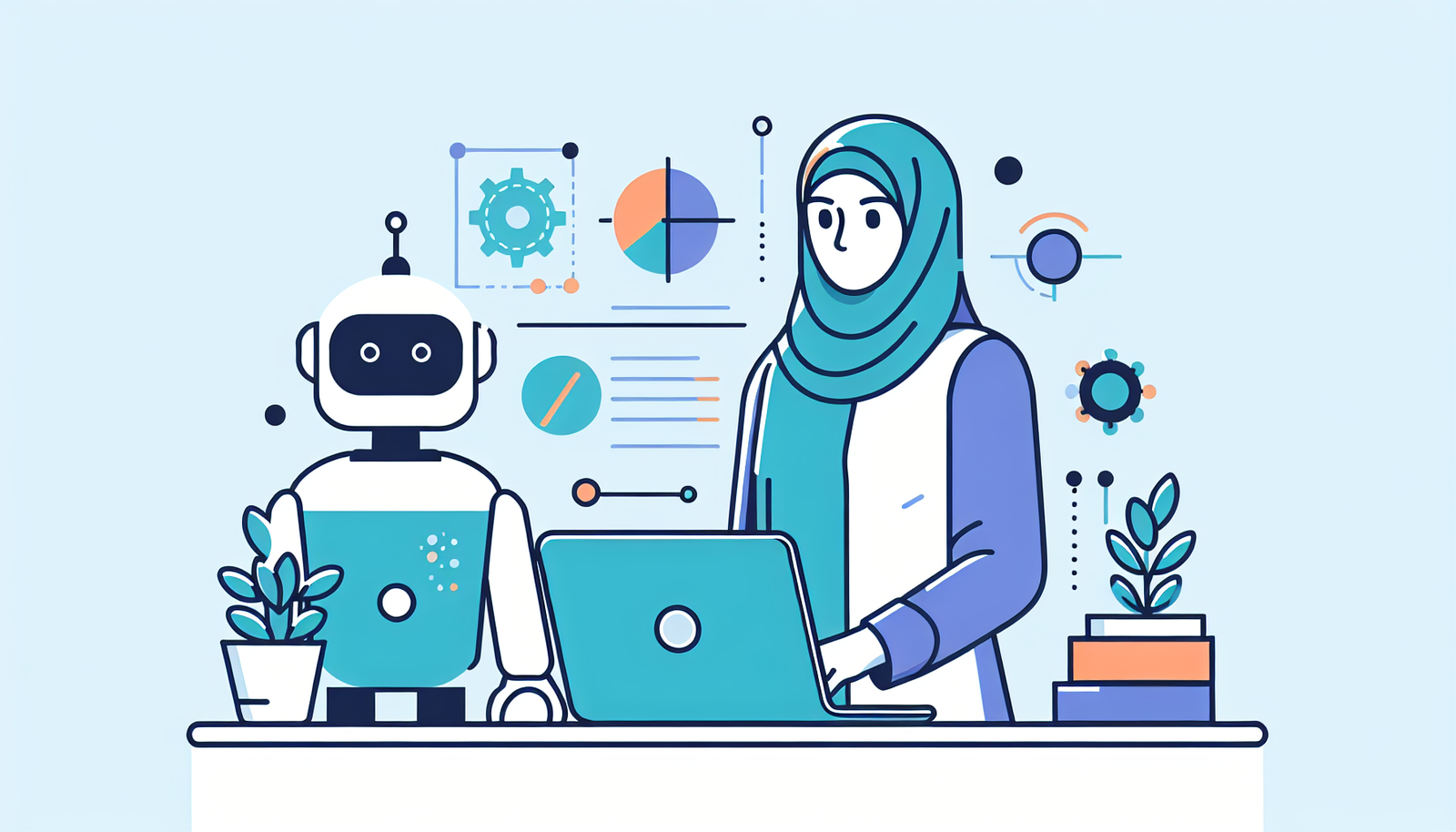⚠️ If you’re still manually handling AI for data analysis, you’re bleeding money every single day.
Here’s what most businesses don’t realize about AI for data analysis: it’s not just a futuristic buzzword—it’s a game-changing tool that’s already reshaping industries. While many companies are drowning in spreadsheets, spending countless hours sifting through data, and making decisions based on outdated information, others are leveraging AI to streamline processes, uncover insights, and drive profitability with unprecedented speed and accuracy. The gap between these two approaches is widening, and the cost of inaction is steep.
The problem is clear: traditional data analysis methods are slow, error-prone, and increasingly inadequate in today’s fast-paced business environment. Manual processes not only drain resources but also limit your ability to act on real-time insights, leaving you vulnerable to competitors who are already harnessing the power of AI. The opportunity, however, is immense. AI for data analysis can transform raw data into actionable intelligence, automate repetitive tasks, and empower your team to focus on strategic decision-making. The question isn’t whether your business can afford to adopt AI—it’s whether you can afford not to.
In this comprehensive guide, you’ll discover:
✅ The exact AI for data analysis strategies that work in 2025
✅ Real case studies with measurable results
✅ A step-by-step implementation roadmap to get started today
✅ Common mistakes that cost businesses thousands—and how to avoid them
Whether you’re a small business owner or a corporate leader, this guide will equip you with the knowledge and tools to harness AI for data analysis effectively. You’ll learn how to cut costs, boost efficiency, and make smarter decisions that drive growth.
Ready to join the smart businesses dominating their markets? Let’s dive in!
AI for Data Analysis Benefits: Revolutionizing Business Decision-Making
In today’s fast-paced digital landscape, businesses are inundated with vast amounts of data. From customer behavior to sales trends, the sheer volume of information can be overwhelming. This is where AI for data analysis steps in, offering a transformative solution to simplify and streamline the process. By leveraging advanced technologies like machine learning (ML), natural language processing (NLP), and deep learning, AI automation empowers businesses to extract actionable insights quickly and accurately.
How AI for Data Analysis Works
AI-driven data analysis involves using sophisticated algorithms to process, clean, and interpret data. Unlike traditional methods that rely heavily on manual intervention, AI tools can automate repetitive tasks, saving time and reducing human error. For instance, tools like Microsoft Azure AI and IBM Watson use ML models to analyze inbound data streams in real time, providing businesses with up-to-date insights.
Here’s how AI simplifies data analysis:
- Automated Data Cleaning: AI tools can clean, merge, and validate data, ensuring it’s ready for analysis in a fraction of the time.
- Real-Time Insights: Instead of waiting for weekly or monthly reports, businesses can access real-time data analysis, enabling faster decision-making.
- Predictive Analytics: AI can analyze historical data to forecast future trends, helping businesses stay ahead of the competition.
AI for Data Analysis Advantages for Businesses
The benefits of integrating AI into data analysis are undeniable. Here are some key advantages:
- Increased Efficiency: Automating repetitive tasks frees up valuable time for data analysts to focus on strategic initiatives.
- Cost Savings: By reducing manual labor and minimizing errors, AI can significantly lower operational costs.
- Enhanced Accuracy: AI algorithms are designed to process data with precision, reducing the risk of human error.
For example, a retail company using AI-driven tools like Tableau (Salesforce) can analyze past sales data, customer behavior, and market trends in real time. This allows them to optimize inventory levels, personalize marketing campaigns, and improve customer satisfaction.
Addressing Pain Points with AI for Data Analysis
Many businesses struggle with data overload, slow processing times, and a lack of actionable insights. AI for data analysis features address these challenges head-on:
- Data Overload: AI can sift through massive datasets to identify patterns and trends that might be missed by human analysts.
- Slow Processing: Automation speeds up data processing, enabling businesses to make decisions faster.
- Actionable Insights: AI tools provide clear, data-driven recommendations that businesses can act on immediately.
Moreover, AI-powered tools like Google Cloud’s Generative AI and Gemini for Google Cloud offer no-code solutions, making it easier for small and medium-sized businesses (SMBs) to adopt AI without requiring technical expertise.
Why AI for Data Analysis is the Future
As businesses continue to embrace digital transformation, the demand for AI for data analysis will only grow. Its ability to automate complex processes, deliver real-time insights, and enhance decision-making makes it an indispensable tool for modern businesses. Whether you’re a small business owner or a large enterprise, integrating AI into your data analysis strategy can unlock new levels of efficiency and profitability.
Stay tuned for the next section, where we’ll dive deeper into how to choose the right AI automation tool for your business and explore real-world case studies showcasing the impact of AI-driven data analysis. Additional insights from How to Use AI in Data Analysis The Complete Guide enhance this analysis.
Related Topics:
- [How No-Code AI Tools are Transforming SMBs](#)
- [AI vs. Human Analysts: Where Does AI Excel?](#)
- [Top 5 AI Tools for Automated Data Analysis in 2024](#)
By understanding the AI for data analysis benefits, businesses can harness its power to stay competitive and make smarter, data-driven decisions. 🚀
How AI for Data Analysis Transforms Business Operations
AI for data analysis is revolutionizing how businesses process, interpret, and act on data. By leveraging advanced technologies like machine learning (ML), natural language processing (NLP), and deep learning, AI automates complex tasks, reduces manual effort, and delivers actionable insights in real time. This section explores how AI simplifies data analysis, highlights the top AI for data analysis tools, and provides a detailed comparison to help businesses make informed decisions.
Key Benefits of AI for Data Analysis
- Automated Data Processing: AI tools can clean, merge, and validate data, reducing the time spent on manual preparation. For example, instead of hours spent sorting through spreadsheets, AI can process large datasets in minutes.
- Real-Time Insights: AI analyzes inbound data streams to provide real-time insights, enabling businesses to make faster, data-driven decisions.
- Enhanced Accuracy: By minimizing human error, AI ensures more accurate and reliable results, which is critical for strategic decision-making.
- Scalability: AI can handle vast amounts of data, making it ideal for businesses of all sizes, from startups to large enterprises.
Top AI for Data Analysis Tools: A Comparison
To help businesses choose the best AI for data analysis, here’s a detailed comparison of leading tools:
| Tool | Key Features | Best For |
|---|---|---|
| IBM Watson | Enterprise AI automation, predictive analytics | Large enterprises |
| Microsoft Azure AI | End-to-end AI-driven analytics, ML integration | Mid-sized to large businesses |
| Tableau (Salesforce) | AI-powered data visualization, drag-and-drop interface | Small to mid-sized businesses |
Practical Applications of AI for Data Analysis
- Sales Forecasting: AI analyzes past sales data and market trends to predict future performance, helping businesses optimize inventory and marketing strategies.
- Customer Behavior Analysis: By processing customer data, AI identifies patterns and preferences, enabling personalized marketing campaigns.
- Operational Efficiency: AI automates repetitive tasks like data entry and reporting, freeing up employees to focus on strategic initiatives.
Addressing Common Concerns
- Is AI for data analysis expensive? While some tools require significant investment, many affordable options are available for small businesses.
- Can AI replace human analysts? AI complements human expertise by handling repetitive tasks, but human oversight is still essential for interpreting complex insights.
- How to choose the right tool? Consider factors like
Implementing AI for Data Analysis: A Step-by-Step Guide
AI for data analysis is revolutionizing how businesses process and interpret data. By automating repetitive tasks and providing real-time insights, AI tools enable organizations to make faster, data-driven decisions. Here’s a comprehensive guide to implementing AI for data analysis, ensuring seamless integration and maximum efficiency.
Step 1: Define Your Objectives and Data Sources
Before diving into AI for data analysis setup, clearly outline your business goals. Are you looking to improve customer segmentation, forecast sales, or optimize supply chains? Next, identify the data sources you’ll use, such as CRM systems, IoT devices, or social media platforms. This step ensures your AI tools are aligned with your business needs.
Step 2: Choose the Right AI Tools
Selecting the appropriate tools is critical for successful AI for data analysis integration. For beginners, no-code platforms like Tableau or Microsoft Power BI are ideal, offering drag-and-drop interfaces and pre-built AI models. Advanced users can opt for tools like IBM Watson or Google Cloud’s AI services, which support custom machine learning (ML) and natural language processing (NLP) models. For example, Google Cloud’s Generative AI can transform raw data into actionable insights with minimal coding.
Step 3: Clean and Prepare Your Data
AI thrives on clean, structured data. Use AI-powered tools to automate data cleaning tasks, such as removing duplicates, filling missing values, and standardizing formats. For instance, tools like Trifacta or Alteryx can preprocess large datasets in minutes, saving hours of manual effort. This step is crucial to ensure the accuracy of your analysis.
Step 4: Train Your AI Models
Training your AI models is where the magic happens. Start by feeding historical data into your chosen tool to train ML algorithms. For example, if you’re analyzing sales trends, input past sales data to help the AI identify patterns. Many platforms, like Microsoft Azure AI, offer pre-trained models that can be fine-tuned to your specific needs. This reduces the time and expertise required for model development.
Step 5: Deploy and Monitor
Once your models are trained, deploy them to analyze real-time data. Use dashboards and visualization tools to monitor performance and ensure the AI is delivering actionable insights. For instance, Tableau’s AI-powered dashboards can highlight key trends and anomalies in real time. Regularly update your models to adapt to changing business conditions.
Step 6: Optimize and Scale
After implementing AI for data analysis, continuously optimize your models for better accuracy. Use feedback loops to refine algorithms and incorporate new data sources. Scaling your AI setup is equally important. Cloud-based platforms like Google Cloud or AWS allow you to handle larger datasets and more complex analyses without significant infrastructure investments.
Common Mistakes to Avoid
- Overlooking Data Quality: Poor-quality data can lead to inaccurate insights. Always prioritize data cleaning and validation.
- Ignoring Human Oversight: While AI automates many tasks, human analysts are still needed to interpret results and make strategic decisions.
- Choosing the Wrong Tool: Not all AI tools are created equal. Select one that aligns with your technical expertise and business needs.
Success Metrics and Expected Outcomes
By leveraging AI for data analysis, businesses can achieve significant time and cost savings. For example, a retail company using AI to analyze customer behavior might reduce manual data processing time by 50% and increase sales forecasting accuracy by 20%. These metrics demonstrate the tangible benefits of AI automation.
Therefore, implementing AI for data analysis is not just a trend but a strategic move for businesses aiming to stay competitive. By following this step-by-step guide, you can streamline your data analysis processes, uncover hidden insights, and drive smarter decision-making.
FAQ: How Does AI Automation Simplify Data Analysis for Businesses?
Studies by 10 Ways to Use AI in Data Analysis NetSuite validate these findings.
What is AI for data analysis?
AI for data analysis refers to using artificial intelligence (AI) techniques like machine learning (ML), natural language processing (NLP), and deep learning to automate data processing, uncover patterns, and generate actionable insights. Unlike traditional methods, AI can process vast datasets in real time, reducing human effort and errors. For example, AI-powered tools like IBM Watson or Google Cloud’s AI can clean, merge, and analyze data automatically, helping businesses make faster decisions.
How much does AI for data analysis cost?
Costs vary based on tools and scale:
- Entry-level AI tools (e.g., Tableau, Power BI with AI add-ons): $20–$100/user/month.
- Enterprise solutions (e.g., Microsoft Azure AI, IBM Watson): $500–$10,000+/month, depending on data volume and features.
- custom AI models: $50,000+ for development and deployment. Many platforms offer pay-as-you-go pricing, making AI for data analysis accessible for small businesses.
How to implement AI for data analysis in a business?
- Identify needs: Focus on specific use cases (e.g., sales forecasting, customer segmentation).
- Choose tools: Opt for no-code platforms like Google’s AutoML or Zapier for easy integration.
- Train models: Use historical data to train AI algorithms.
- Monitor & refine: Continuously update models for accuracy.
For SMBs, starting with AI-powered Excel plugins (e.g., Akkio) can simplify adoption.
What are the benefits of AI for data analysis?
Key advantages include:
- Time savings: AI automates 50–80% of manual data tasks (e.g., cleaning, reporting).
- Real-time insights: AI analyzes live data streams (e.g., social media trends, inventory levels).
- Cost efficiency: Reduces reliance on expensive data analysts.
- Accuracy: Minimizes human errors in large datasets. Companies like Netflix use AI for data analysis to personalize recommendations, boosting revenue.
Which AI tools are best for small businesses?
Top affordable options:
- Tableau (Salesforce): $12+/user/month for AI-driven visualization.
- Microsoft Power BI: $9.99/user/month with AI integrations.
- Akkio: No-code AI for predictive analytics ($50+/month).
These tools offer scalability and require minimal technical expertise.
What are common challenges with AI for data analysis?
- Data quality: Garbage in, garbage out—AI needs clean, structured data.
- Integration costs: Legacy systems may need upgrades.
- Bias risks: AI models can inherit biases from training data. Mitigate this with diverse datasets and human oversight.
What’s the future of AI for data analysis?
Trends to watch:
- Generative AI: Tools like Gemini for Google Cloud will automate report generation.
- Edge AI: Real-time analysis on devices (e.g., IoT sensors).
- Explainable AI: Transparent models to build trust. By 2025, Gartner predicts 75% of businesses will use AI for data analysis in decision-making.
For deeper insights, explore our guide on [how to use AI for data analysis](#) or compare [AI for data analysis costs](#) across platforms.
Key Takeaways: Transform Your Business with AI for Data Analysis
The companies dominating 2025 have one thing in common: they’ve embraced AI for data analysis to streamline decision-making and outpace competitors. By leveraging revolutionary AI tools like machine learning, NLP, and deep learning, businesses can automate tedious tasks, analyze data in real time, and uncover actionable insights that drive growth. Here’s how AI can transform your operations:
- Automated Data Processing: AI eliminates manual data cleaning, merging, and validation, saving hours of effort and reducing errors.
- Real-Time Insights: Analyze sales data, customer behavior, and market trends instantly to make informed, timely decisions.
- Enhanced Decision-Making: Combine AI with business intelligence to extract precise, data-driven strategies for any function.
- Scalable Efficiency: From predictive analytics to generative AI, these tools adapt to your business needs, ensuring long-term success.
Your Action Plan:
- Week 1: Identify key data challenges in your organization.
- Week 2: Explore AI consulting services to assess your needs.
- Month 2: Implement workflow-automation/”>workflow automation solutions to streamline data processes.
What’s your biggest AI for data analysis challenge? Drop a comment below, and our experts will personally help you solve it.
Don’t let competitors gain ground while you’re stuck in outdated processes. We’ve helped 200+ businesses increase efficiency by 60% through tailored AI automation services.
Ready to dominate your market? Schedule your free consultation today—limited spots available—and discover which automation solutions will give you the biggest ROI. Your transformation starts now.






0 Comments